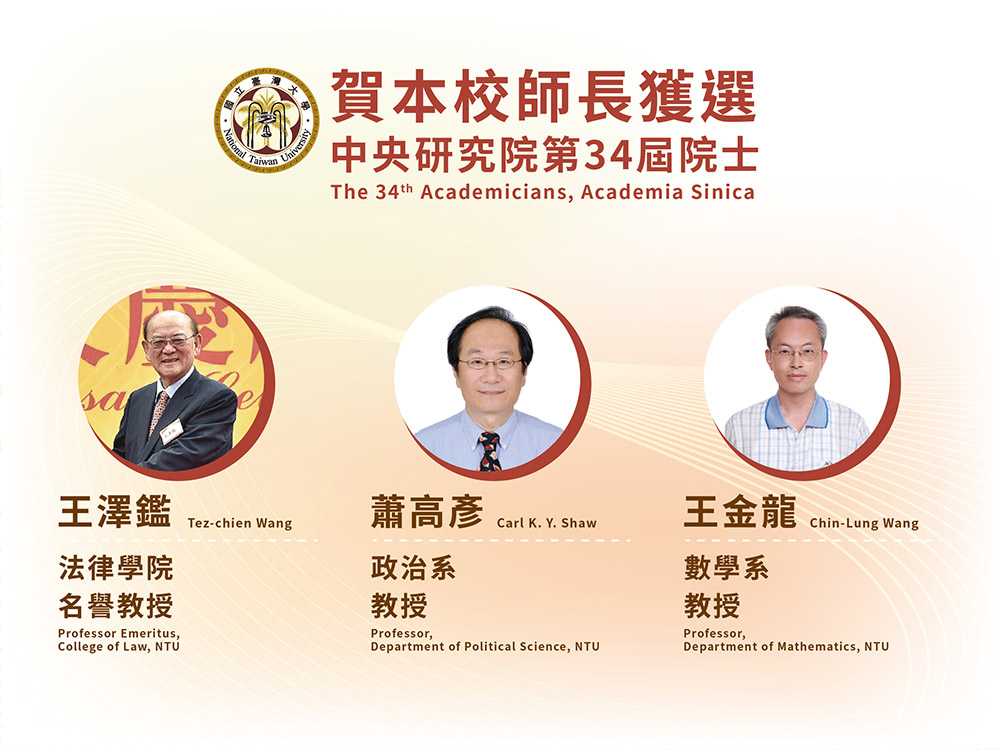
NTU Opening Ceremony: “Where Creativity and Dreams Take Flight”
瀏覽器版本過舊,或未開啟 javascript
請更新瀏覽器或啟用 javascript
Spotlights
Prof. Chun-Liang Pan & His Team Discover Mechanisms of Memory and Learning under Cellular Stress.
The cognitive and behavioral functions of organisms change with different physiological conditions. Such behavioral plasticity induced by an organism’s internal states can be found in nature everywhere, and it is one of the most fundamental phenomena in behavioral and cognitive neuroscience. When the tissues and organs of an organism are functionally impaired, the resulting cellular stress will also lead to changes in behaviors, thereby enabling the organism to stay away from threats and hazards and improve its chances of survival in an unfavorable environment. The research team led by Prof. Chun-Liang Pan of the Institute of Molecular Medicine found that when nematodes are confronted with cellular stress, they can induce memory and learning behaviors via serotonergic circuits. Their paper publishing these findings can be found in a recent issue of the well-known U.S. scientific journal Proceedings of the National Academy of Sciences (PNAS).
The nervous system of the nematode Caenorhabditis elegans comprises only 302 neurons, yet it is one of the most important model systems in modern neuroscience research due to the availability of advanced research tools in molecular biology and the fact that our understanding of the anatomical structure of the nematode’s nervous system has reached the resolution at the electron microscopic level, on top of the creature’s diverse behaviors. By inhibiting mitochondrial respiration to generate intracellular stress, Prof. Pan’s team induced the nematodes to connect the “harmless bacterial odor” with “cellular pressure”, both occurring at the same time, causing the nematodes to exhibit avoidance behaviors towards bacteria, a pattern comparable to that of classical conditioning. A type of aversive learning crucial to an organism’s survival in nature, this learning behavior is also similar to what the proverb “once bitten, twice shy” conveys: being bitten by a snake causes the victim to become fearful of any object that resembles a snake. Prof. Pan's team further discovered that the NSM neurons of C. elegans increase the synthesis and secretion of serotonin in its initial exposure to stress, which is related to the formation of memory. The serotonin released by NSM binds to SER-4 serotonin receptors on the RIB interneurons, giving RIB the ability to evoke memory. This type of circuit mechanism, which is controlled by different nerve cells for various aspects of memory, can be compared to the memory mechanism in mammals. It is worth noting that due to the tiny size of C. elegans, Prof. Pan's team placed the nematodes into microfluidic chambers and employed high-sensitivity calcium imaging to capture fluorescent images of the responses of the nematodes’ nerve cells to bacterial odors. The results indicate that mitochondrial stress causes novel responses of NSM and RIB neurons to bacterial cues, which suggests that memory and behavioral plasticity result from changes in neuronal activity.
This study was carried out principally by Yueh-Chen Chiang, a graduate of the Institute of Molecular Medicine’s Master’s program. Ms. Chiang stayed on as research assistant at the laboratory after graduating in 2020 and proceeded to complete the entire project. She eventually submitted the research paper for publication and carried out the additional experiments required by the journal reviewers within a span of three months. Ms. Chiang is slated to commence her doctoral studies in the U.S. at Johns Hopkins University. In addition, Dr. Chien-Po Liao, currently a postdoctoral researcher at Columbia University, was a Ph.D. student at the Institute who first carried out research on nematode behavior at Prof. Pan’s laboratory, and he is also credited as a co-author of this paper. The authors acknowledge the Ministry of Science and Technology and the Center for Precision Medicine for their financial support.

NTU Opening Ceremony: “Where Creativity and Dreams Take Flight”

Prof. Wei-Shiung Yang wins MOE National Excellent Teacher Award

NTU College of Public Health's Global Health Program Joins the Association of Schools of Public Health in the European Region

NTU hosts a successful dg.o 2024

Congratulations to NTU faculty members elected as 34th AS academicians
Current Spotlights